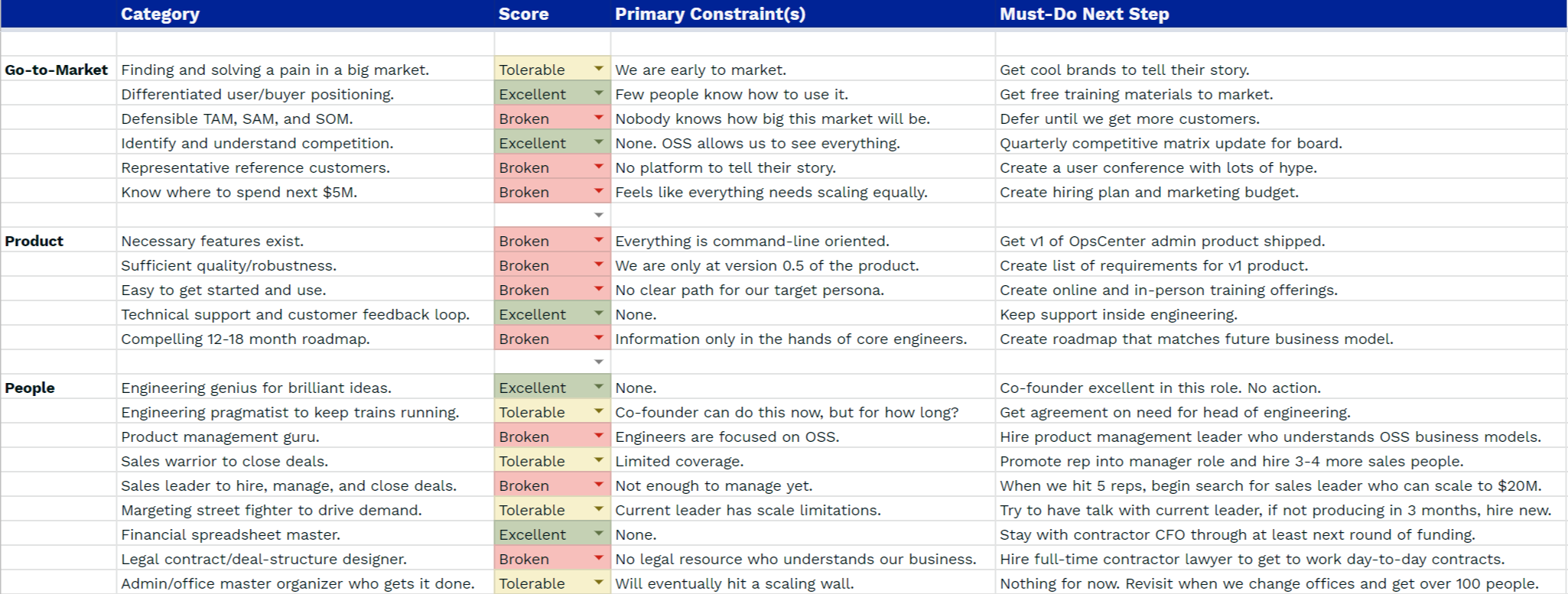
As a founder or CEO, there are at least a hundred things you could be doing at any given point in time. It’s easy to get off track with so many demands on your attention and seemingly endless things on fire. I teach a session in our Unusual Academy about how to ruthlessly prioritize as a founder or CEO to align your team and get things done. In this article, I detail the “GPP Heatmap” I used while I was CEO of Datastax to figure out what needed my team’s attention and energy.
The GPP heatmap covers the three areas every early-stage founder should focus on:
Your GTM strategy tells you, your company, and your investors how you’re going to use the resources at your disposal to grow the company.
What will you consider “product” at your company? This can apply to documentation, training materials, UX, brand, support, partner integration, etc.
This represents not only the people in your company but also the wider group of people who are going to help you on your journey, including your board, family, advisor, mentors, etc.
Each pillar includes a category, score (excellent, tolerable, or broken) with primary constraints, and any must-do next steps. The heatmap doesn’t have to be super detailed or perfect. The goal is to create a common resource for your team to work from and discuss how to best prioritize as a team.

As you can see, I didn’t sugar-coat the situation, and there were a number of failures and learning opportunities to confront immediately. This heatmap became the most vital tool I used to get the company on track to where it is today.
Use the founder prioritization GPP heatmap regularly as a tool when discussing priorities with your internal team and board of directors. Doing so will help clarify and narrow the conversations around topics that matter most. Here are some points for you and your team to think through as you tackle GTM, product, and people.
Download the founder prioritization heatmap template here. The pre-filled template reflects the real challenges and priorities I faced when I first joined DataStax in 2011. Create a copy and take a rough pass at filling out each the GTM, product, and people categories for your company.